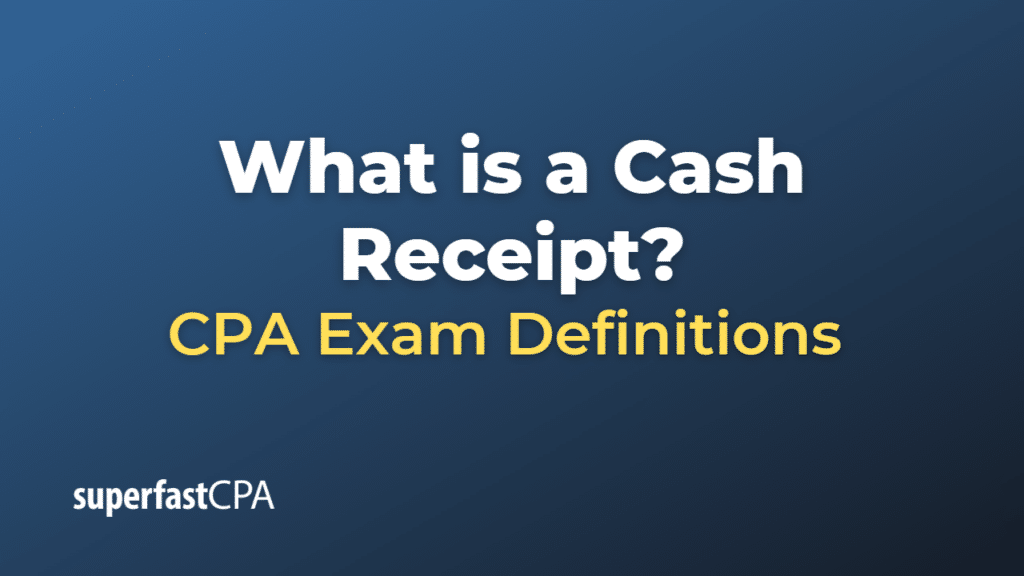Cash Receipt
A cash receipt is a document that serves as proof of a financial transaction involving the exchange of cash between a payer and a payee. Cash receipts are used in businesses to record and track sales, customer payments, and other financial transactions where cash is involved. They provide a written record of the amount of cash received, the date of the transaction, and any relevant details about the transaction, such as the items purchased or services provided.
A cash receipt typically includes the following information:
- Name and contact details of the business issuing the receipt
- Date of the transaction
- Unique receipt or transaction number for reference purposes
- Description of the goods or services provided
- Amount of cash received
- Any applicable taxes or fees
- Total amount paid by the customer
- Method of payment (e.g., cash, check, or credit card)
- Signature or acknowledgment of the person receiving the cash
Cash receipts are essential for businesses to maintain accurate financial records, track sales, manage inventory, and prepare financial statements. They also serve as evidence of a transaction for customers, who may need the receipt for tax purposes, warranty claims, or expense reimbursement.
Example of a Cash Receipt
Let’s consider an example of a cash receipt for a local coffee shop.
Suppose a customer purchases a latte and a muffin at the coffee shop, and the total cost, including taxes, comes to $7.50. The customer pays in cash, and the cashier provides the customer with a cash receipt as proof of payment. The cash receipt would include the following information:
- Name and contact details of the coffee shop (e.g., “Joe’s Coffee House, 123 Main Street, (555) 123-4567”)
- Date of the transaction (e.g., “April 29, 2023”)
- Unique receipt or transaction number (e.g., “#000523”)
- Description of the goods provided (e.g., “1 Latte, 1 Muffin”)
- Amount of cash received (e.g., “$7.50”)
- Any applicable taxes or fees (e.g., “Tax: $0.50”)
- Total amount paid by the customer (e.g., “Total: $7.50”)
- Method of payment (e.g., “Payment method: Cash”)
- Signature or acknowledgment of the person receiving the cash (e.g., “Received by: John Doe”)
In this example, the cash receipt serves as a record of the transaction for both the customer and the coffee shop. The coffee shop can use the receipt to track sales and update inventory, while the customer can retain the receipt as evidence of the purchase, which might be needed for tax purposes, expense reimbursement, or other reasons.













